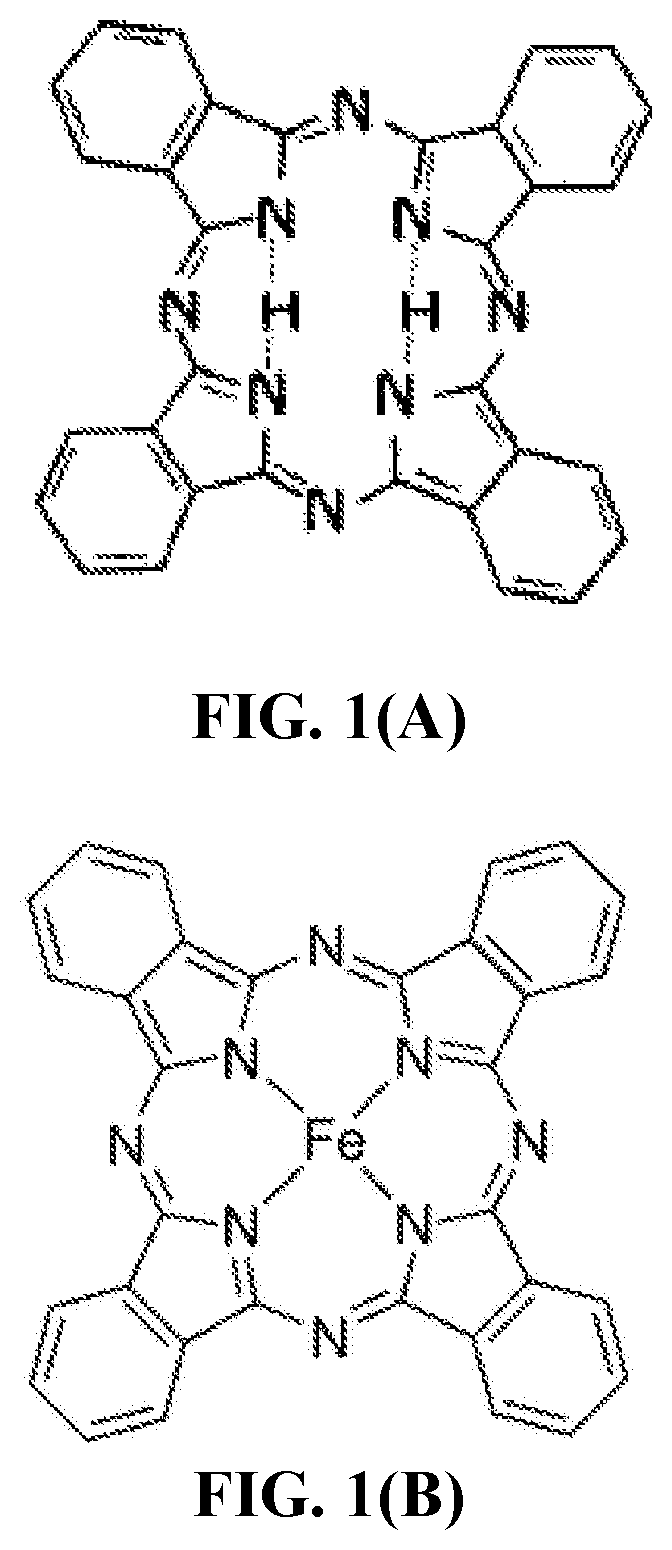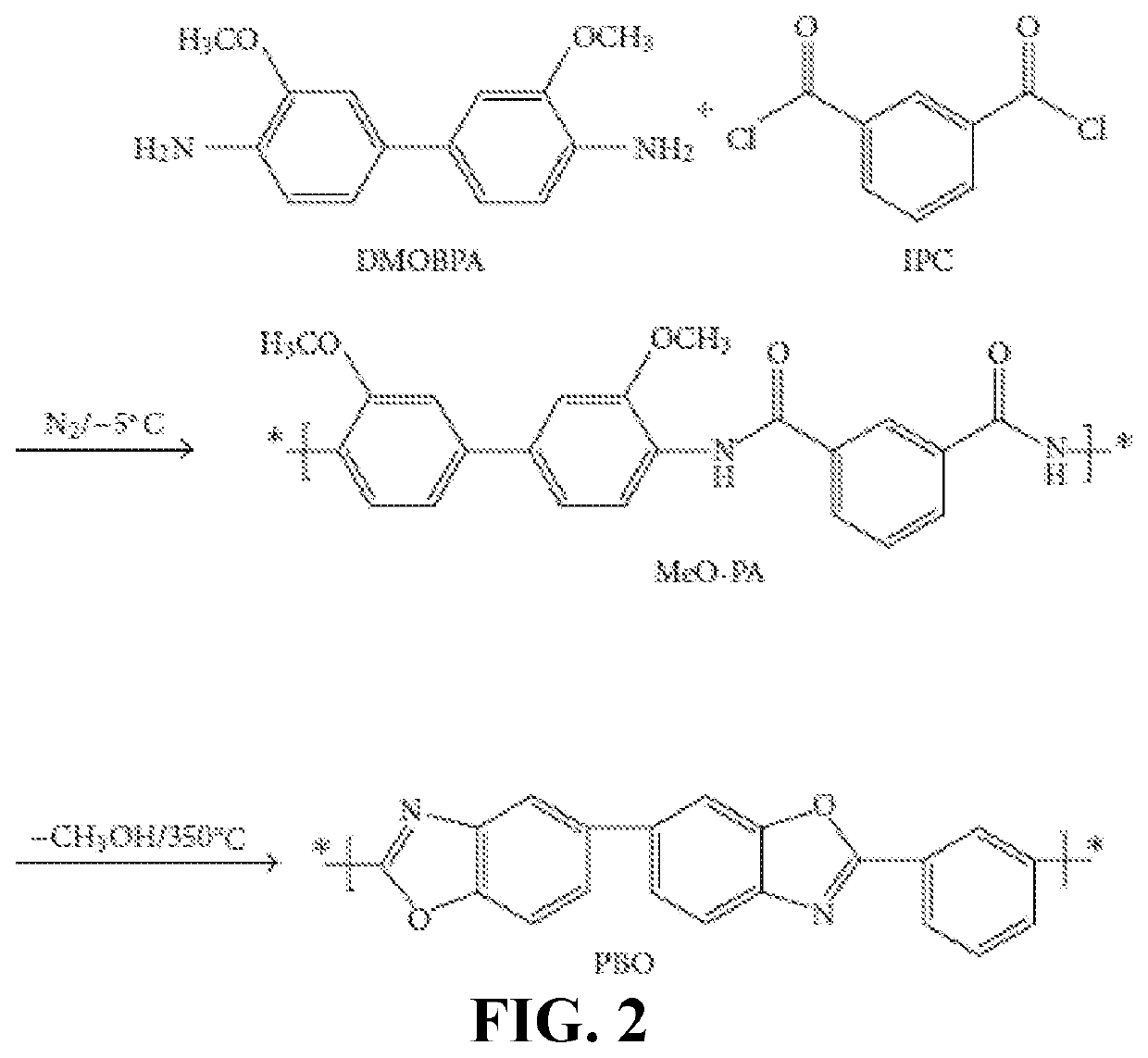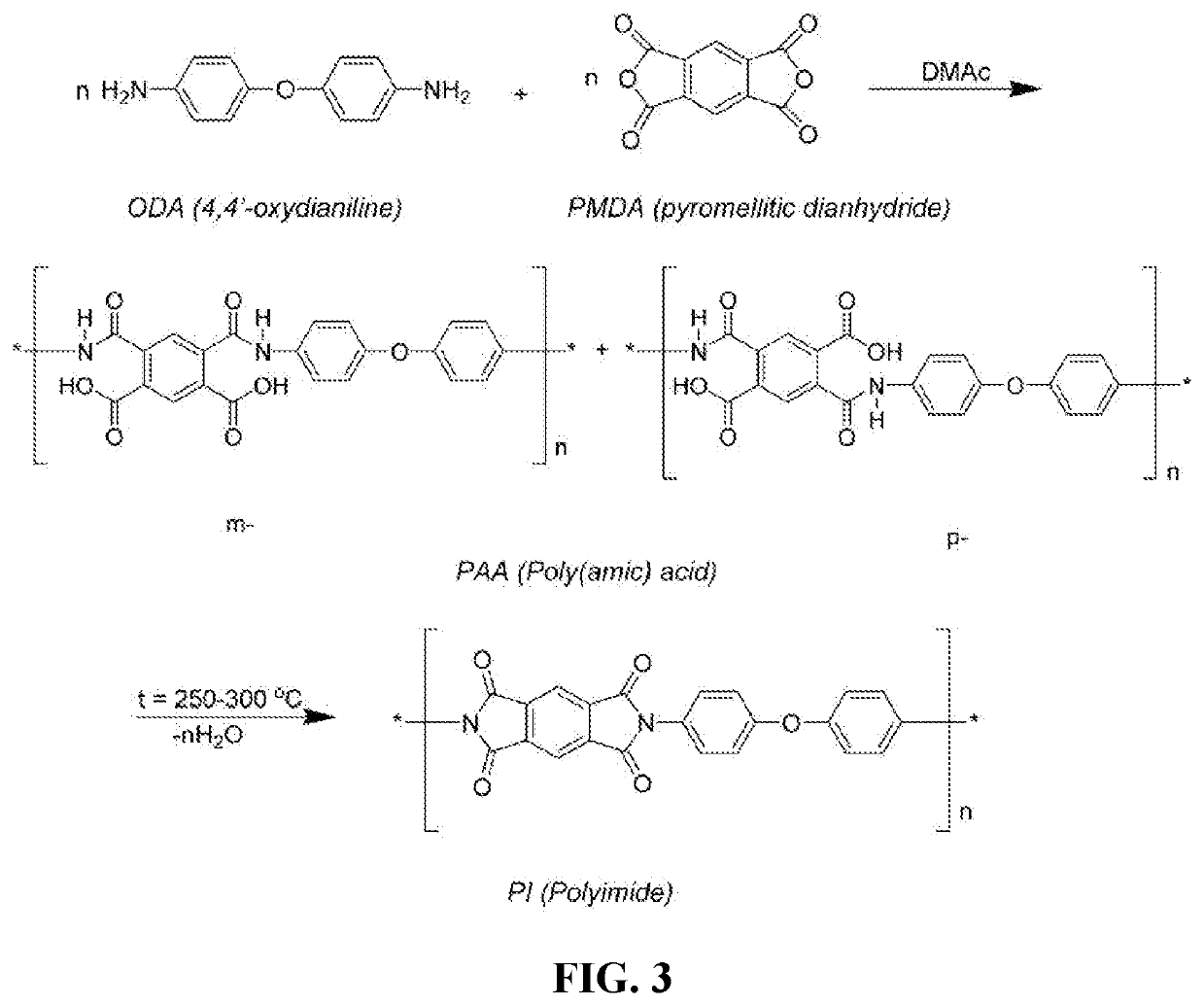Dark-color polymer composite films
a composite film and dark color technology, applied in the direction of film/foil adhesives, coatings, adhesives, etc., can solve the problems of difficult to identify the exact configuration of the underlying circuit traces, difficult to produce smooth, pinhole-free films, difficult to produce matte black films thinner than 8 m, etc., to achieve high elastic modulus, high tensile strength, and high dielectric strength
- Summary
- Abstract
- Description
- Claims
- Application Information
AI Technical Summary
Benefits of technology
Problems solved by technology
Method used
Image
Examples
example 1
on of Polybenzoxazole (PBO) Films and Phthalocyanine Compound-PBO Composite Films
[0102]Polybenzoxazole (PBO) films were prepared via casting and thermal conversion from its precursor, methoxy-containing polyaramide (MeO-PA). Specifically, monomers of 4, 4′-diamino-3,3′-dimethoxydiphenyl (DMOBPA), and isophthaloyl dichloride (IPC) were selected to synthesize PBO precursors, methoxy-containing polyaramide (MeO-PA) solution. This MeO-PA solution for casting was prepared by polycondensation of DMOBPA and IPC in DMAc solution in the presence of pyridine and LiCl at −5° C. for 2 hr, yielding a 20 wt % pale yellow transparent MeO-PA solution. The inherent viscosity of the resultant MeO-PA solution was 1.20 dL / g measured at a concentration of 0.50 g / dl at 25° C. This MeO-PA solution was diluted to a concentration of 15 wt % by DMAc for casting.
[0103]The as-synthesized MeO-PA was cast onto a glass surface to form thin films (35-120 μm) under a shearing condition. The cast film was dried in a...
example 2
on of Polyimide (PI) Films and Phthalocyanine Compound-Filled Polyimide Films
[0104]The synthesis of conventional polyimide (PI) involved poly(amic acid) (PAA, Sigma Aldrich) formed from pyromellitic dianhydride (PMDA) and oxydianiline (ODA). Prior to use, both chemicals were dried in a vacuum oven at room temperature. Next, 4 g of the monomer ODA was dissolved into 21 g of DMF solution (99.8 wt %). This solution was stored at 5° C. before use. Various amounts (2-35% by weight) of nitrogen phthalocyanine and Co phthalocyanine, respectively suspended / dissolved in DMAC, were added, and the slurry was stirred for 4 hours using a magnetic stir bar. Subsequently, the viscous polymer solution was cast onto a polymer film or glass substrate and heat treated to create an opaque, flexible black film having a thickness that was varied from 1.1 to about 92 μm. Representative chemical reactions involved in the formation of polyimide polymers from precursors (monomers or oligomers) are given in F...
example 3
on of Polybenzimidazole (PBI) Films and Phthalocyanine Compound-PBI Films
[0105]PBI is prepared by step-growth polymerization from 3,3′,4,4′-tetraaminobiphenyl and diphenyl isophthalate (an ester of isophthalic acid and phenol). The PBI used in the present study was in a PBI solution form, which contains 0.7 dl / g PBI polymer dissolved in dimethylacetamide (DMAc). The PBI and phthalocyanine compound-PBI films were cast onto the surface of a glass substrate. The iron phthalocyanine was used in this study.
[0106]Scanning electron microscopy (SEM), transmission electron microscopy (TEM) pictures of lattice imaging of the graphene layer, as well as selected-area electron diffraction (SAD), bright field (BF), and dark-field (DF) images were also conducted to characterize the structure of various graphitic film materials. A close SEM scrutiny of the PBI-polymer composite films indicates that the films were very uniform and phthalocyanine compound molecules are not easily discernable.
PUM
| Property | Measurement | Unit |
|---|---|---|
| Length | aaaaa | aaaaa |
| Fraction | aaaaa | aaaaa |
| Fraction | aaaaa | aaaaa |
Abstract
Description
Claims
Application Information
 Login to View More
Login to View More - R&D
- Intellectual Property
- Life Sciences
- Materials
- Tech Scout
- Unparalleled Data Quality
- Higher Quality Content
- 60% Fewer Hallucinations
Browse by: Latest US Patents, China's latest patents, Technical Efficacy Thesaurus, Application Domain, Technology Topic, Popular Technical Reports.
© 2025 PatSnap. All rights reserved.Legal|Privacy policy|Modern Slavery Act Transparency Statement|Sitemap|About US| Contact US: help@patsnap.com



